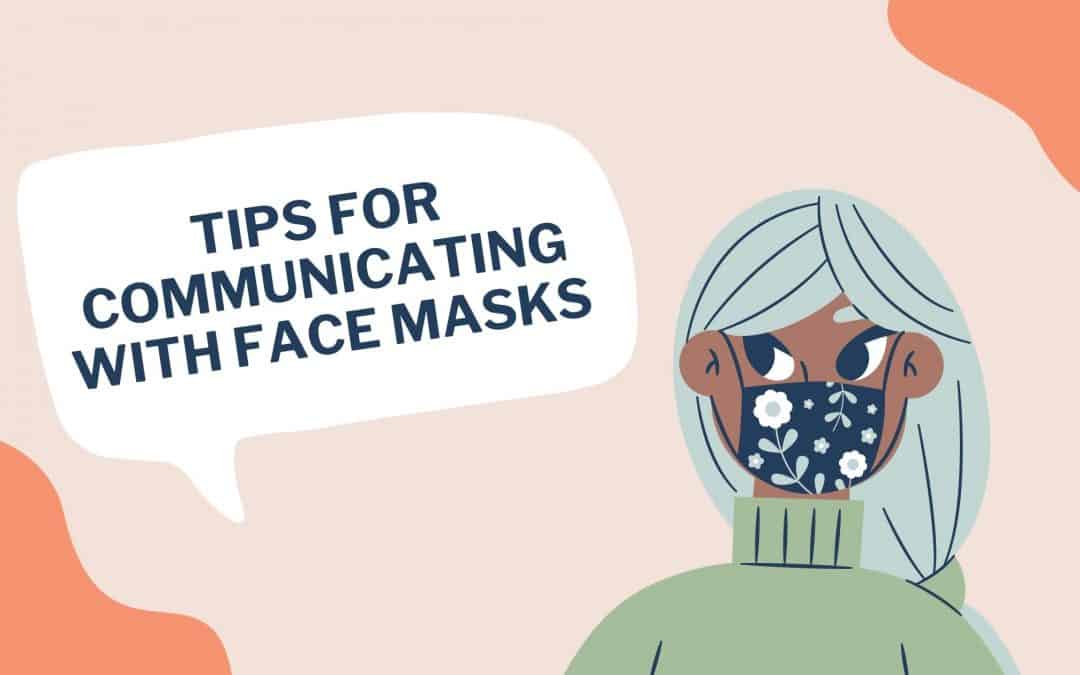Face masks have been part of daily life for over one year now. A critical safety measure, wearing face masks offers protection from contracting and spreading coronavirus. As the pandemic continues to shape much of the world, face masks are an essential necessity. This safety precaution, required in most places, can present unique challenges for people with hearing loss. There are useful strategies you can practice to engage in effective communication while wearing a mask.
Communication Challenges with Face Masks
People with hearing loss experience a reduced ability to hear and process sound. In addition to using hearing aids, people often use various strategies to maximize hearing. Masks make it difficult to use these strategies as well as create barriers to hearing clearly. A few major challenges to effectively communicating with masks include:
- Covers Mouth: the most challenging barrier that masks present is that they completely cover the mouth. This prevents people from accessing specific visual cues that aid in communication. People with hearing loss often read mouths to identify individual words and follow a conversation. This strategy is a useful way to distinguish words, navigate the context of a conversation, and understand what is being said. Masks block this visual cue which is a significant way that conversations are accessible, particularly for people with hearing loss.
- Distorts Sound: masks muffle sound, making words unclear and difficult to hear. They contribute to distorting sound by restricting mouth movement. Masks over the mouth limit how much the mouth can move. This impacts words being fully annunciated and clear and also changes the tone and sound of one’s voice. This makes it more challenging to hear and process.
- Background Noise: the presence of background noise can always be challenging for communication. Environments with lots of noise provide additional sound for the brain to process which can be both distracting and overwhelming. This coupled with face masks blocking visual cues and worsening sound quality, creates simultaneous challenges to communication.
We have all likely experienced these barriers during the pandemic and are familiar with how face masks impact our ability to engage in and navigate conversations. These challenges are amplified for people with hearing loss who already experience challenges around hearing and processing sound.
Tips for Communicating with Face Masks
Though face masks do impact communication, there are useful tips you can integrate that maximize hearing and make communication easier. A few helpful tips include:
- Ensure Comfortable Fit: masks come in different sizes so you want to make sure that the masks you are wearing fit you properly. Masks should not be tight which obscures sounds. They should feel comfortable around your mouth and ears throughout the day.
- Reduce Background Noise: avoid having conversations in environments with loud background noise by choosing quieter settings and avoiding places during peak hours. Also, do what you can to reduce background noise by turning off unnecessary sound (music, television, appliances, etc.), rolling up windows if you are in a car, etc.
- Amplify Other Nonverbal Cues: because the mouth is inaccessible, you can integrate and emphasize other nonverbal cues. This could include using hand gestures, eyebrow movements, head nods, etc., which are useful ways of providing context.
- Avoid Multitasking: multitasking during a conversation is a major distraction and source of additional noise. Multitasking while having a discussion with masks can reduce the conversation’s quality and people’s ability to follow along. It is essential to be fully present and engaged, mainly because conversations with masks require a little more work and effort!
- Speak Slower: because masks can muffle sound, be sure to take your time speaking so that you can fully pronounce words. Speaking slower can increase the clarity of words and minimize the muffling of sound.
Masks have indeed become part of daily living. It is essential to know how they impact your communication and practice ways to reduce this impact. These tips can help facilitate effective communication, making it easier to navigate interactions with others.
New Masks on the Horizon
Researchers at the University of Manchester in the U.K. are currently developing face masks that help with communication, specifically for people with audio and visual impairments. This exciting development could be a game-changer, so stay tuned for updates!
If you have experienced changes in your hearing or find it difficult to follow a conversation, it is vital to take a hearing test. Contact us today to learn more about our audiology services!

